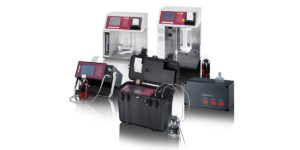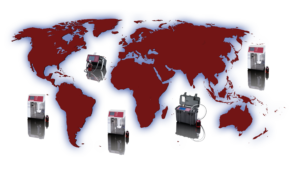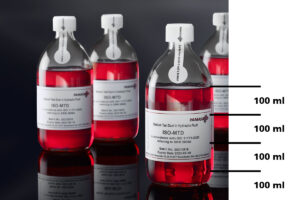By means of the PAMAS S4031 GO particle counter, the Norwegian Institute of Marine Research (IMR) in Bergen was able to gain new insights in the field of marine biology. The measured values successfully proved the theory that the feeding behaviour of mussels is not constant and fluctuates. In addition, the previous assumption that the mussels’ energy supply is a purely mechanical sieving process turned out to be incorrect. Instead, the blue mussel adjusts its food intake to the prevailing plankton population within the seawater.
The Norwegian Institute of Marine Research IMR in Bergen has been successfully using the PAMAS S4031 GO portable particle counter for many years for scientific research and for the exploration of marine biology. In this example, the institute deals with the nutritional behaviour of the blue mussel (Mytilus edulis), which is grown in aquacultures in the seawater in the east of Stavanger, in the Norwegian Lysefjord. It feeds on plankton, which it filters out of the water by way of its gills.
In one study, plankton was analyzed in the seawater. The objective of the study was to explore the energy supply of the blue mussel and to track down potential factors involved in dietary variations. For this purpose, the plankton population and the blue mussel’s retention efficiency were analyzed at two measuring locations. From May until August, a few blue mussels were fixed with the aid of lantern nets in 7 meters sea depth at the measuring locations. Water samples were taken from the same depth. The plankton particles in the seawater were counted using the PAMAS S4031 GO particle counter. The research team started with the water samples and measured the particle quantity and the particle size distribution within the range of 1 to 35 µm. Through seawater analysis via particle counting, seasonal variations of the plankton concentration could be identified. The marine biologists proved with this analysis that the plankton population increases and that the size distribution changes with the rise of the water temperature from 8 °C to 16 °C during the period of analysis. Beside the plankton population in seawater, the marine research team also analyzed the blue mussel’s retention efficiency. For this purpose, some mussels were taken out of the net for a defined period of time and put into feeding chambers. The mussel’s retention capacity was determined with the flow-through method, i.e. the plankton population at the feeding chamber entrance was compared with the particle concentration at the exit of the chamber. The findings were that in May and June, the mussels mainly ate larger plankton particles in the range of 20 to 35 µm. The seawater analysis had shown a well-balanced particle size distribution for this period of early summer. In late July and August however, the mussels filtered smaller plankton particles of 6 to 16 µm out of the seawater. For the late summer period, the particle counter had detected an increased plankton concentration of smaller particle sizes in the seawater.
In a second study, the IMR used the PAMAS S4031 GO to successfully prove that controlled upwelling of nutrient deep water into upper, oligotrophic seawater levels has a significant impact on mussel production, since the plankton biomass can be largely increased by upwelling. Consequently, the yield of the mussel production can be tripled through upwelling.
The success of these studies has contributed to the fact that the portable particle counter PAMAS S4031 GO is now used by numerous marine research institutes worldwide and is valued as a precise and reliable measuring instrument. Due to its 32 freely adjustable size channels, the particle counter enables a very differentiated particle size analysis in the lower micron range.
© Photo by StockXchange




